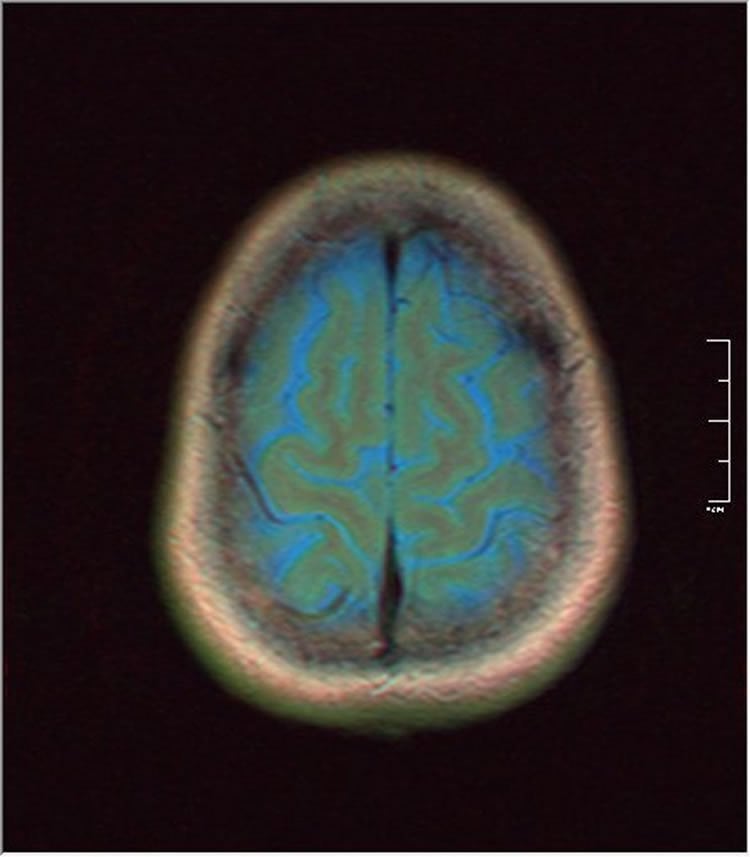The biggest ever study of DNA from people with glioma – the most common form of brain cancer – has discovered five new genetic variants associated with the disease.
One variant increases the risk of developing glioblastoma, a particularly aggressive kind of glioma with an average survival of only 10-15 months after diagnosis, by almost a quarter.
Researchers said their findings provided important new evidence for an inherited susceptibility to glioma, and offered potential clues for how to treat or prevent the disease.
Scientists at The Institute of Cancer Research, London, led an international team in analysing DNA from more than 5,637 people who had developed glioma, and comparing it with 9,158 people without the disease.
Their study, published today in Nature Communications, was mainly funded by Cancer Research UK, the Wellcome Trust and the DJ Fielding Medical Research Trust.

The research added analysis of new cases to a ‘meta-analysis’ of four other previous studies, and pulled together data from people with glioma from Europe, the US and Canada.
Each variant is a one-letter difference in the DNA code which increases the risk of glioma in those who have it. This study brings the total number of genetic variants linked to glioma to 12.
One variant was associated with a 23% increased risk of glioblastoma – although because glioma is a rare disease, the underlying risk to any individual remains small. This variant was close in the DNA code to the gene encoding RNA polymerase III, which plays a complex role in the synthesis and manufacture of intra-cellular messenger molecules that build other proteins.
The other four genetic variants were found to increase the risk of less aggressive, non-glioblastoma forms of glioma by around five per cent each.
These may also act through their effect on other nearby genes. One variant has an intriguing link with a gene called VTI1A, which is involved in nerve development and the cellular response to insulin.
Study leader Professor Richard Houlston, Professor of Molecular and Population Genetics at The Institute of Cancer Research, London, said:
“We believe our study is the largest ever conducted of the genetics of glioma – the most common form of brain cancer – and it provides firm evidence that susceptibility to the disease is in part inherited.
“One of the risk factors we identified is linked to quite a dramatically increased chance of developing glioblastoma, a particularly aggressive kind of brain cancer. Our study sheds fresh light on the biology of gliomas, and could provide clues to why the disease develops, and how it could be treated or prevented.”
Dr Aine McCarthy, science information officer at Cancer Research UK, said:
“These are exciting results because identifying genetic mistakes that increase the risk of glioma could be a vital first step towards developing new treatments against the disease. Building on these findings and determining the exact role these genetic changes play in the development of glioma could help doctors personalise treatment for the disease in the future and save more lives.”
Funding: The study was funded by Cancer Research UK, Wellcome Trust, DJ Fielding Medical Research Trust.
Source: Henry French – Institute of Cancer Research
Image Source: The image is credited to Nevit Dilmen and is licensed CC BY-SA 3.0
Original Research: Full open access research for “Genome-wide association study identifies multiple susceptibility loci for glioma” by Ben Kinnersley, Marianne Labussière, Amy Holroyd, Anna-Luisa Di Stefano, Peter Broderick, Jayaram Vijayakrishnan, Karima Mokhtari, Jean-Yves Delattre, Konstantinos Gousias, Johannes Schramm, Minouk J. Schoemaker, Sarah J. Fleming, Stefan Herms, Stefanie Heilmann, Stefan Schreiber, Heinz-Erich Wichmann, Markus M. Nöthen, Anthony Swerdlow, Mark Lathrop, Matthias Simon, Melissa Bondy, Marc Sanson, and Richard S. Houlston in Nature Communications. Published online October 1 2015 doi:10.1038/ncomms9559
Abstract
Genome-wide association study identifies multiple susceptibility loci for glioma
Previous genome-wide association studies (GWASs) have shown that common genetic variation contributes to the heritable risk of glioma. To identify new glioma susceptibility loci, we conducted a meta-analysis of four GWAS (totalling 4,147 cases and 7,435 controls), with imputation using 1000 Genomes and UK10K Project data as reference. After genotyping an additional 1,490 cases and 1,723 controls we identify new risk loci for glioblastoma (GBM) at 12q23.33 (rs3851634, near POLR3B, P=3.02 × 10−9) and non-GBM at 10q25.2 (rs11196067, near VTI1A, P=4.32 × 10−8), 11q23.2 (rs648044, near ZBTB16, P=6.26 × 10−11), 12q21.2 (rs12230172, P=7.53 × 10−11) and 15q24.2 (rs1801591, near ETFA, P=5.71 × 10−9). Our findings provide further insights into the genetic basis of the different glioma subtypes.
“Genome-wide association study identifies multiple susceptibility loci for glioma” by Ben Kinnersley, Marianne Labussière, Amy Holroyd, Anna-Luisa Di Stefano, Peter Broderick, Jayaram Vijayakrishnan, Karima Mokhtari, Jean-Yves Delattre, Konstantinos Gousias, Johannes Schramm, Minouk J. Schoemaker, Sarah J. Fleming, Stefan Herms, Stefanie Heilmann, Stefan Schreiber, Heinz-Erich Wichmann, Markus M. Nöthen, Anthony Swerdlow, Mark Lathrop, Matthias Simon, Melissa Bondy, Marc Sanson, and Richard S. Houlston in Nature Communications. Published online October 1 2015 doi:10.1038/ncomms9559






